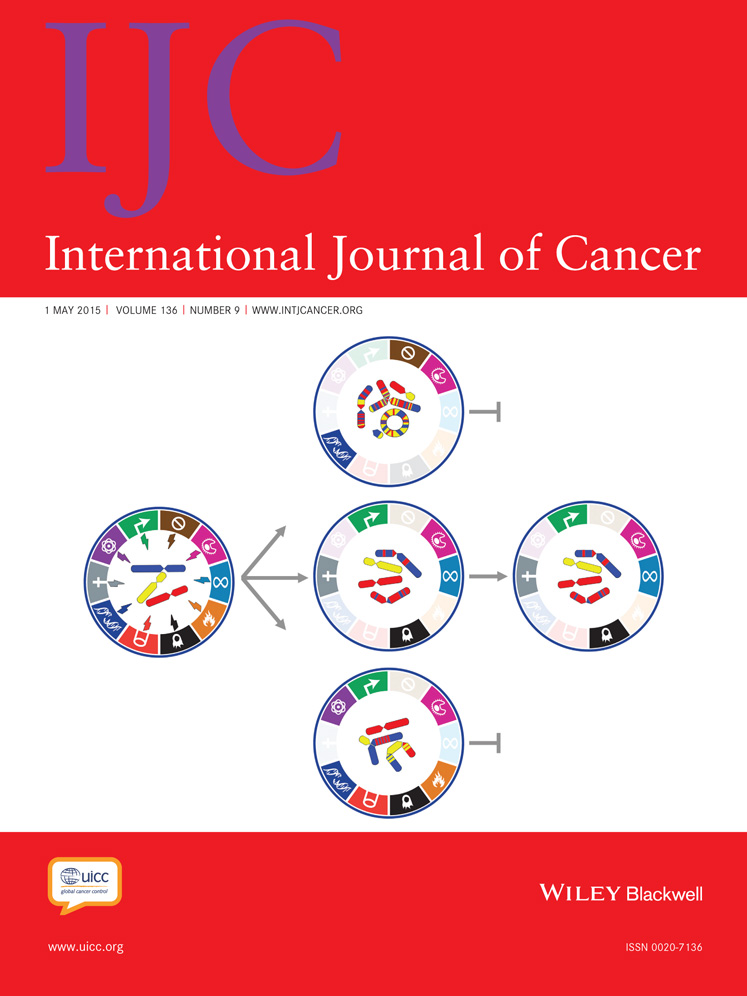Total dietary antioxidant capacity, individual antioxidant intake and breast cancer risk: The Rotterdam study
Abstract
Some studies suggest a favorable role of antioxidants on breast cancer risk but this is still inconclusive. The aim of this study was to assess whether overall dietary antioxidant capacity, as assessed by dietary ferric reducing antioxidant potential (FRAP), and individual dietary antioxidant intake were associated with breast cancer risk. Data was used from women participating in the Rotterdam Study, a prospective cohort study among subjects aged 55 years and older (N = 3,209). FRAP scores and antioxidant intake (i.e., vitamin A, C, E, selenium, flavonoids and carotenoids) was assessed at baseline by a food frequency questionnaire. Incident cases of breast cancer were confirmed through medical reports. During a median follow-up of 17 years, 199 cases with breast cancer were identified. High dietary FRAP score was associated with a lower risk of breast cancer [hazard ratio (HR): 0.68; 95% confidence intervals (CI): 0.49, 0.96]. No overall association between individual antioxidant intake and breast cancer risk was found. However, low intake of alpha carotene and beta carotene was associated with a higher risk of breast cancer among smokers (HR: 2.48; 95% CI: 1.21, 5.12 and HR: 2.31; 95% CI: 1.12, 4.76 for alpha and beta carotene, respectively) and low intake of flavonoids was associated with breast cancer risk in women over the age of 70 (HR: 1.80; 95% CI: 1.09, 2.99). These results suggest that high overall dietary antioxidant capacity is associated with a lower risk of breast cancer. Individual effects of dietary carotenoids and dietary flavonoids may be restricted to subgroups such as smokers and elderly.
Abstract
What's New?
A diet rich in anti-oxidants may protect from breast cancer but studies focusing on individual antioxidant intake have been notoriously inconsistent. Here the authors assessed the overall dietary antioxidant capacity in more than 3000 postmenopausal Dutch women by calculating the so-called ferric acid reducing antioxidant potential (FRAP). They show that high dietary FRAP, but not individual anti-oxidant intake, is associated with an overall lower risk of breast cancer, a result that may help design more consistent studies of anti-oxidant intake and cancer risk in the future.




